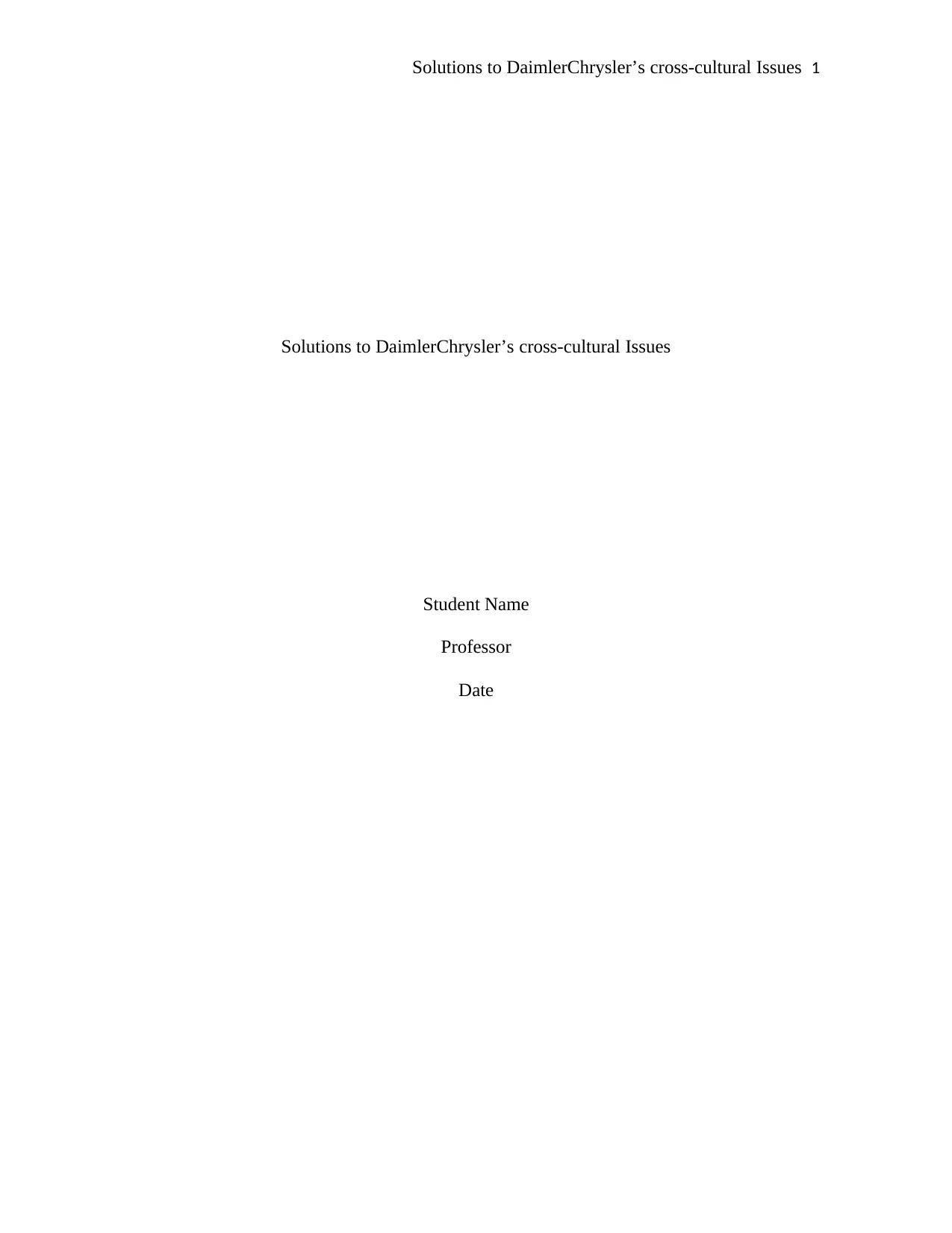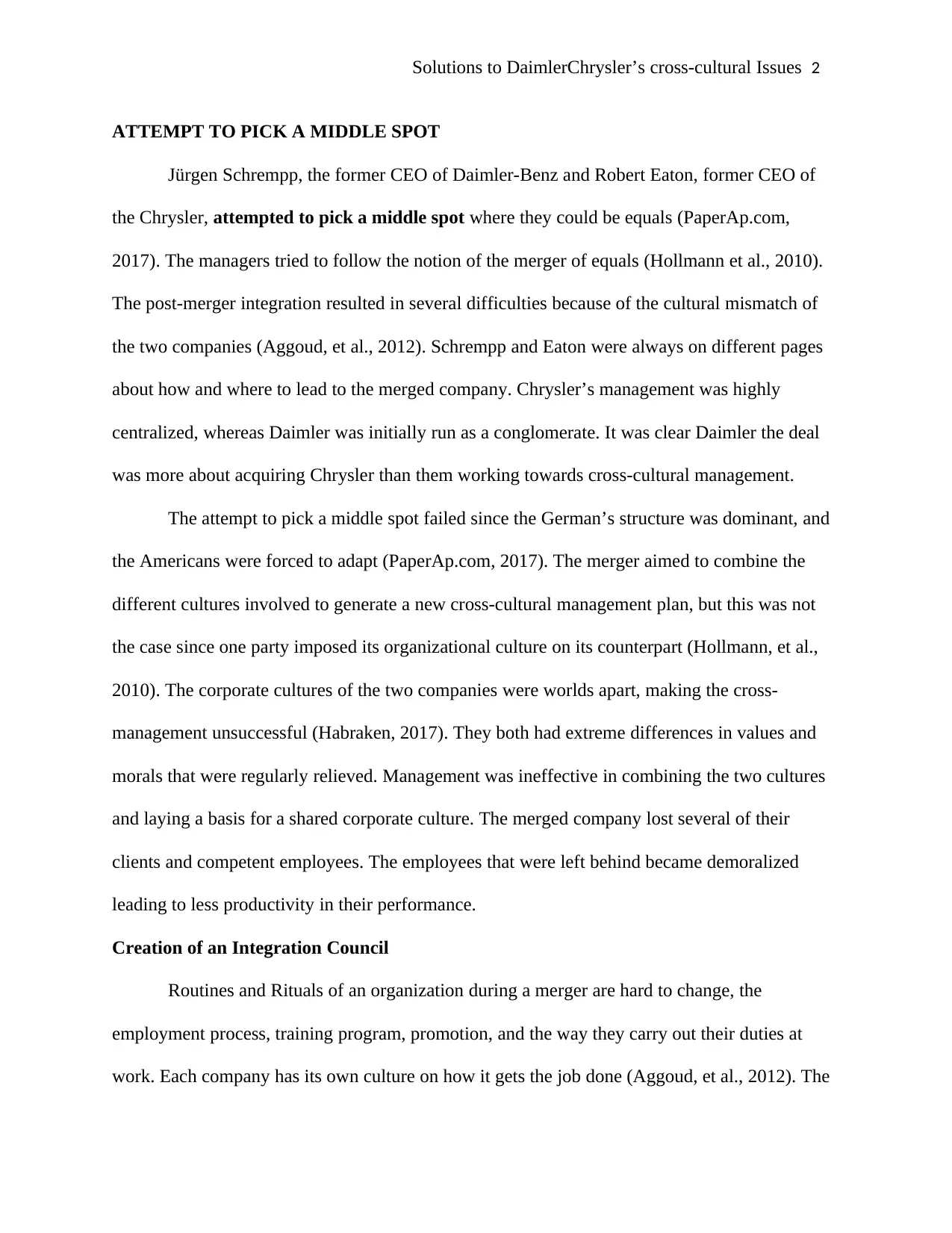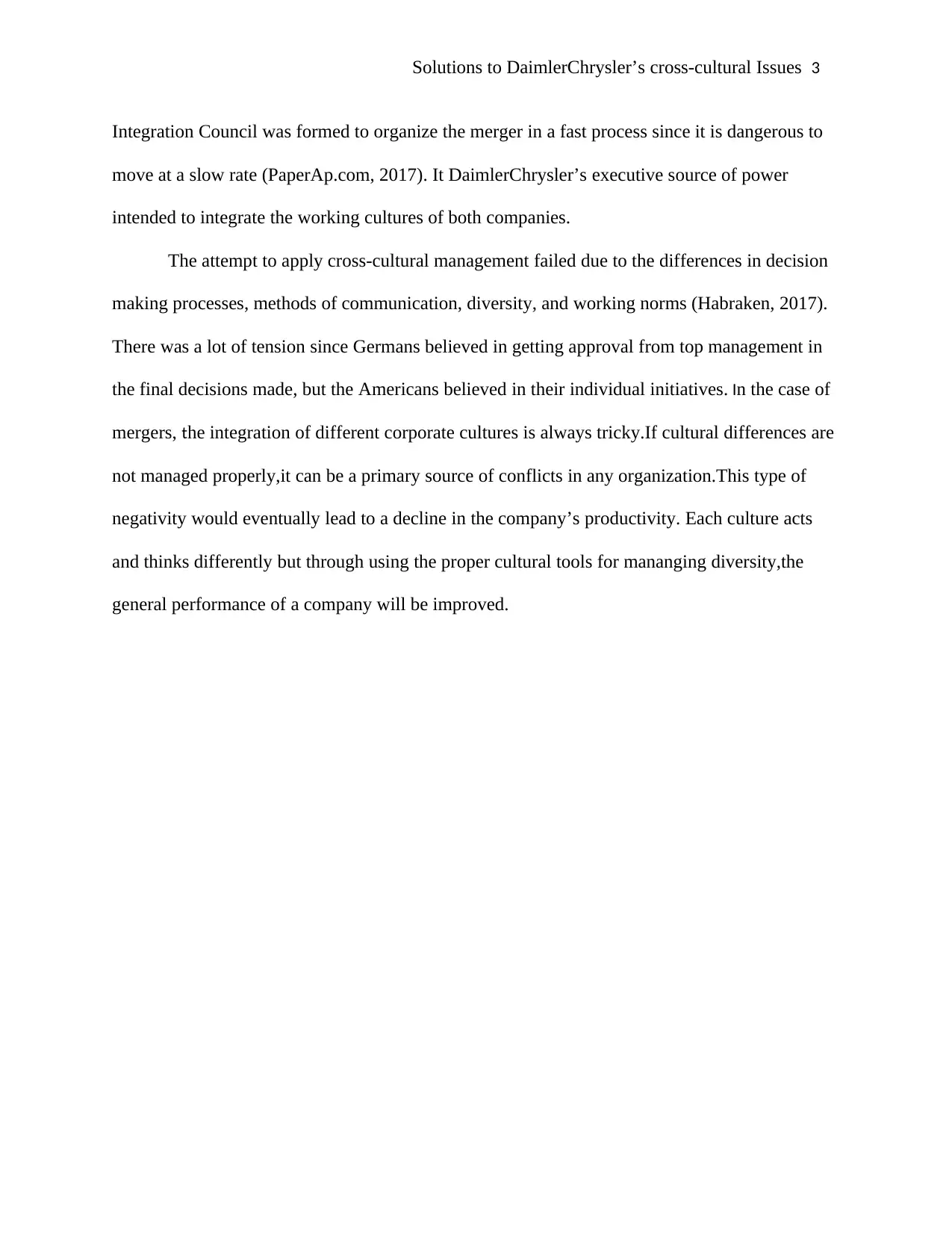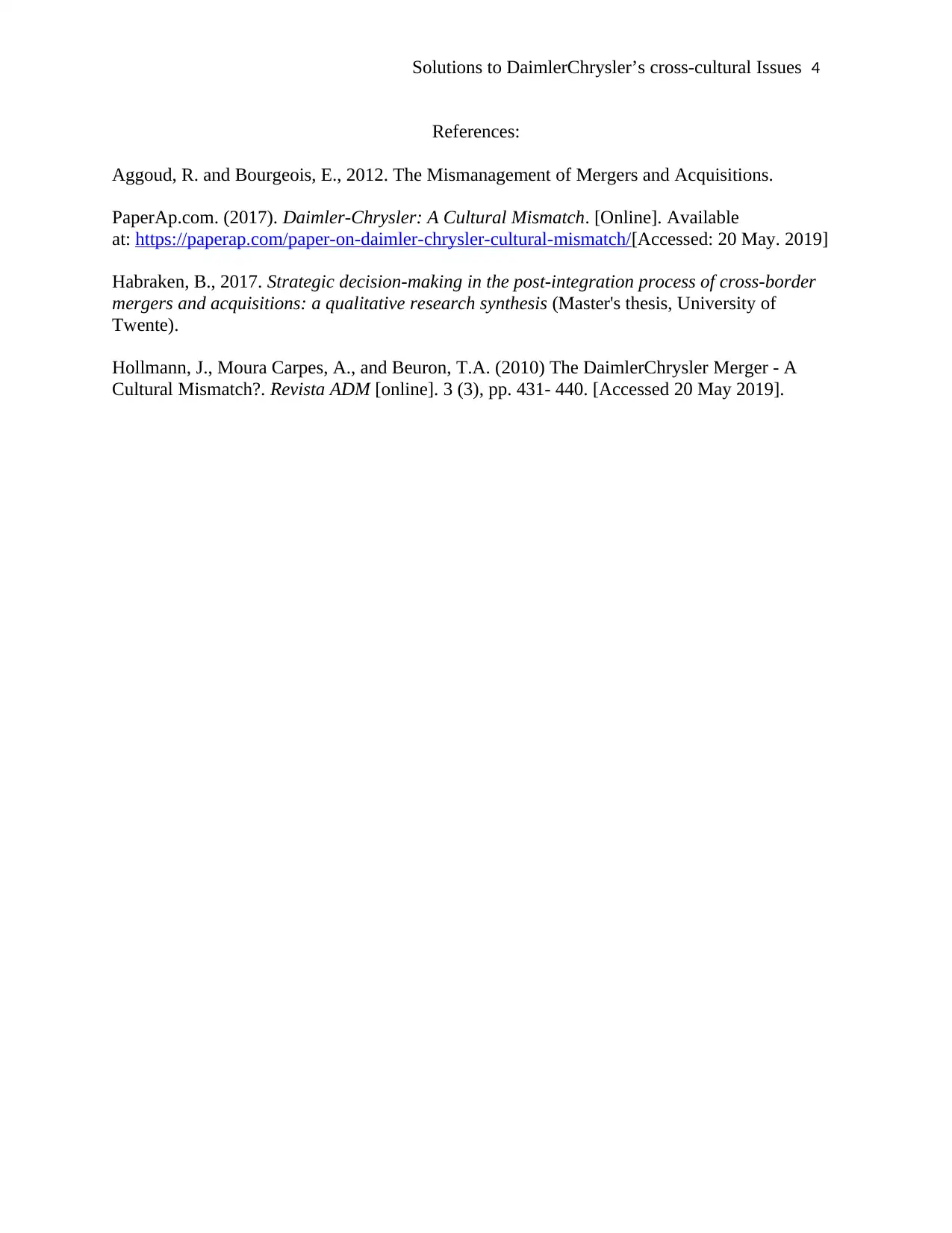Cross-Cultural Challenges and Solutions in DaimlerChrysler Merger
VerifiedAdded on 2022/11/13
|4
|687
|499
Report
AI Summary
This report critically analyzes the cross-cultural issues that arose during the DaimlerChrysler merger. The analysis highlights the cultural mismatch between Daimler-Benz and Chrysler Corporation, focusing on differences in decision-making processes, working methods, and leadership styles. The report examines how these differences led to conflicts and inefficiencies within the merged company. It explores the failure of the 'merger of equals' approach and the dominance of German management practices. The report discusses the formation of the Integration Council and its ineffectiveness due to cultural clashes. Furthermore, it delves into the consequences of these issues, including employee demoralization and loss of clients. Finally, the report proposes solutions such as changes in leadership and cultural adaptation to mitigate these challenges. The report concludes with an overview of the challenges and the need for effective cross-cultural management in mergers and acquisitions, and provides relevant references.
1 out of 4







![[object Object]](/_next/static/media/star-bottom.7253800d.svg)